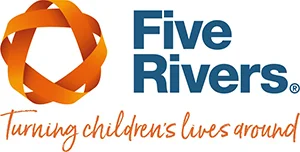Reflections on one year of the war in Ukraine
Friday 24 February 2023
It has now been one year since the beginning of the war between Russia and Ukraine which has been a devastating time for many.
In this article, you can read from Julie, one of our Social Workers who has been working closely with a charity supporting those affected by the war in Ukraine. You can also read the effects of war on young people, written by Bethany from our Assessment and Therapy Team.
The below news story is from Julie Beasley, Senior Social Worker in the West Country, who is involved with a charity helping people affected by the war in Ukraine.
I have been involved with The Helping Hand for Ukraine charity for 6 years and was so moved when I saw the paintings/drawings that the children living in Ukraine had done that I wanted them to be seen to raise awareness of their situation.
Please take the time to look at these amazing, moving drawings in the video below. They were all done by Ukrainian children whilst sheltering in torchlight in bomb shelters.
They were sent to us at The Helping Hand for Ukraine, (a division of the national charity Chernobyl Children’s Lifeline). The charity has worked in Ukraine for the past 14 years and since the beginning of the war has been helping wherever we can. The charity is unique; it has developed strong partnerships within Ukraine enabling us to support children and their families and doing our best to “offer hope to live”.
The pictures will be displayed at The Exchange Gallery and St Marys Church in Penzance from 24th February 2023, which coincides with the year’s anniversary of the war in Ukraine.
If you wish to find out more or make a donation, please visit: https://www.ccll.org.uk/
Watch the video of the drawings from children in Ukraine below.
Young People and The Impact of War
The below article was written by Bethany Burnett from the Assessment and Therapy Team.
When we think of war, automatically our thoughts may draw to scenes of explosion, gunfire, and violence. But the reality is, the complexities and consequences of war are broad and are impacting children and young people in numerous ways. War may not be happening on a global scale or a designated battlefield but rather, it occurs in urban areas affecting the infrastructure of societies and ultimately, those who live there.
The ways in which young people may be affected are, but not limited to:
- Disruption in attachments – Inconsistent contact, absence of guardians (substitute care), preoccupation of parents physically and emotionally
- Lack of/no access to education
- Subjected to poverty by lack of safe housing, food and water
- Medical illness and health deterioration due to lacking access of health services, good nutrition, and safe drinking water
- Suffering an injury, which may be life-changing and potentially leading to a disability
- Recruited into armed forces for combat, messengers, spies, cooks, medical and sexual causes
- Psychological impacts – Young people exposed to the terrors of war and having traumatic experiences can lead to mental health conditions such as post-traumatic stress disorders, depression, and anxiety
A systematic review in 2009 of 7,000+ children suggested a higher prevalence rate of mental disorders among children exposed to conflict than among the general population (Vindya et al, 2009). Although there is not an abundance of research on the issue, reviews like this and accounts from young people in war regions highlight the detrimental psychological impact that being exposed to war can cause. Many children have no control over their circumstances in war regions and suffer severed attachments during these periods. In order to keep children safe, they are often separated from their families to be moved to safer areas and into care homes or orphanages. Those who may remain with a parent may still feel a disruption in their attachments due to the parent feeling preoccupied and distressed themselves by the circumstances and therefore being emotionally unavailable for their child as well as struggling to provide them with physical safety (Barbara, 2006).
As families and young people continue to seek refuge in safe countries such as the UK, it’s important we hold the ATIC values of Five Rivers in mind when communicating with young people who have suffered trauma at the hands of war. As our help may be sought, we can use a two-handed approach to ensure children who may come into our care from these experiences feel nurtured, safe and contained whilst providing needed structure and therapeutic boundaries.
References
Vindya Attanayake, Rachel McKay, Michel Joffres, Sonal Singh, Frederick Burkle Jr & Edward Mills. (2009). Prevalence of mental disorders among children exposed to war: a systematic review of 7,920 children, Medicine, Conflict and Survival, 25:1, 4-19, DOI: 10.1080/13623690802568913
Santa Barbara J. (2006). Impact of war on children and imperative to end war. Croatian medical journal, 47(6), 891–894.
